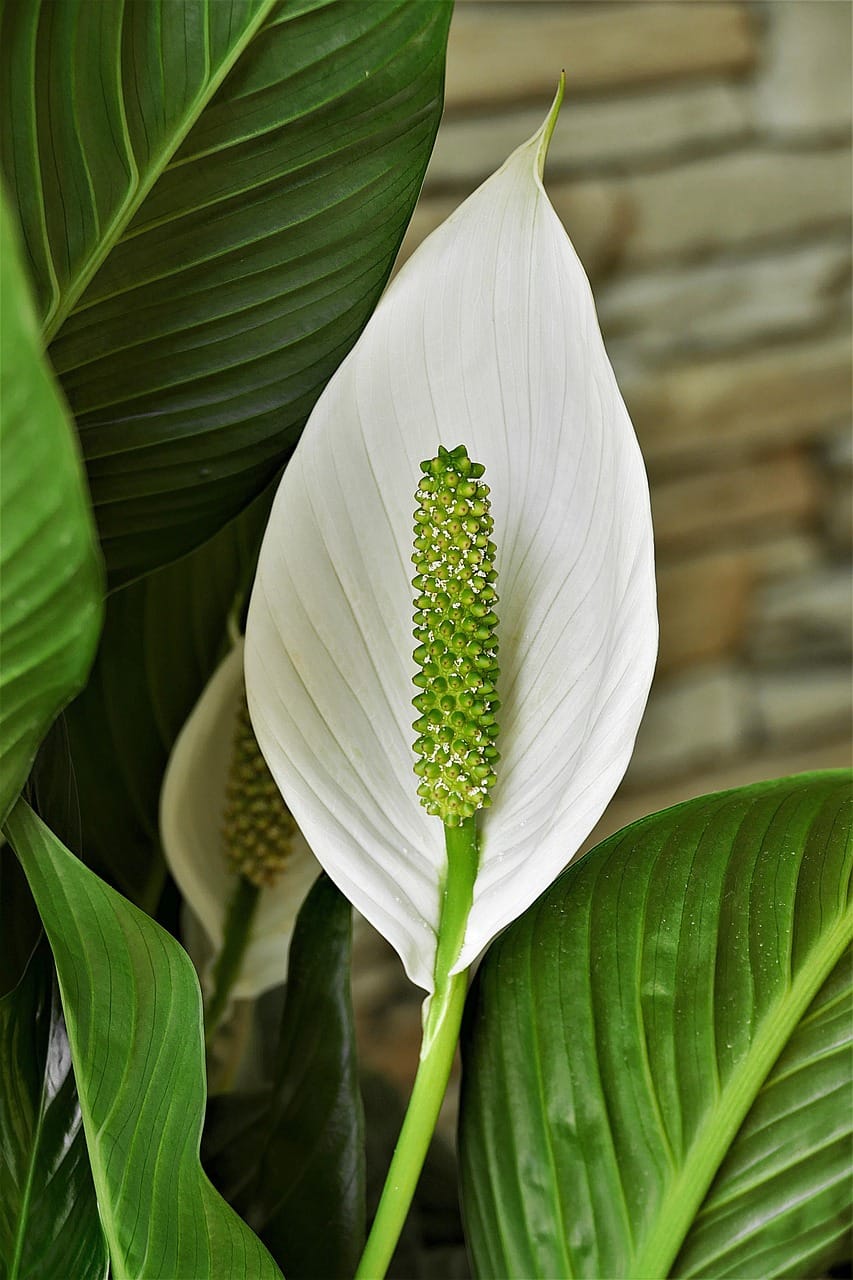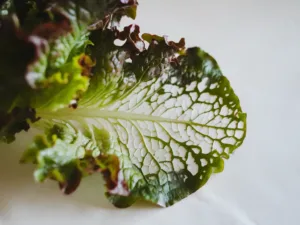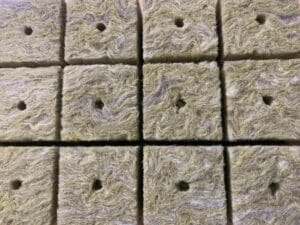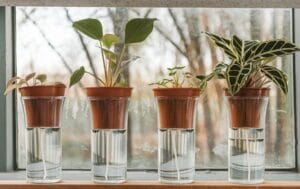The Peace Lily (Spathiphyllum) is one of the most popular houseplants worldwide—and for good reason! With its glossy, dark green leaves and bright white flowers, it brings elegance and tranquility to any home. The Peace Lily is renowned for its air-purifying properties and its ability to thrive even under less-than-ideal lighting conditions. This makes it the perfect choice for both hydroponics beginners and experienced plant enthusiasts alike. In this article, you’ll learn how to successfully grow your Peace Lily in a hydroponic system to ensure healthy growth and a long blooming period.
Which Peace Lily is Right for You?
Selecting the right variety is the first step to successful hydroponic cultivation. There are many Peace Lily varieties that differ in leaf size, growth height, and care requirements. Here are some of the most popular varieties to consider:
- ‘Sensation’: Known for its impressive size, this variety can grow up to 1.5 meters tall. It has large, dark green leaves and is ideal if you’re looking for a striking houseplant. However, ‘Sensation’ requires a bit more space and is therefore better suited for larger rooms.
- ‘Mauna Loa’: This classic variety is medium-sized and particularly easy to care for. With a maximum height of about 60 cm, it’s perfect for smaller living spaces and offices. The ‘Mauna Loa’ is known for its robust characteristics and thrives in both low light and medium humidity.
- ‘Domino’: For those seeking something special, the ‘Domino’ variety offers unique leaf patterns. With white and cream-colored spots on the leaves, it stands out visually. It remains relatively compact and is perfect for placing on a shelf or small table.
The choice of variety depends on your personal preferences and available space. Regardless of which variety you choose, all Peace Lilies are relatively low-maintenance and will thrive in a hydroponic system.
Hydroponics Made Easy – The Best Systems for Your Peace Lily
Not all hydroponic systems are equally suitable for growing Peace Lilies. Here are two of the best systems to consider:
| System | Advantages | Disadvantages |
|---|---|---|
| Kratky Method | Very simple, cost-effective, requires no pump or constant monitoring. Perfect for beginners. | Limited nutrient supply, suitable for smaller plants or as a temporary solution. |
| Deep Water Culture | Continuous oxygen supply and nutrient uptake, rapid root development. | Requires a pump and regular maintenance, higher initial investment for setup. |
The Kratky Method is particularly popular among beginners due to its simplicity and low maintenance. The plants sit in a container with a nutrient solution, and no pump is needed. If you’re willing to invest a bit more and can ensure continuous care, Deep Water Culture (DWC) is an excellent choice. This system promotes excellent root development and healthy plants.
Growing Your Peace Lily in Hydroponics – Here’s How to Succeed
Hydroponic cultivation begins with growing the plants. With Peace Lilies, you can either use seeds, which takes a bit longer, or—much more efficiently—use cuttings. Here’s how to proceed:
- Cuttings Preparation: Choose a healthy mother plant and cut a strong cutting with at least two to three leaves. Ensure the cutting is free of flowers, as they consume too much energy.
- Growing in Starter Cubes: Place the cuttings in starter cubes (e.g., rock wool or coconut fibers). These help the plants retain moisture and form initial roots. Ensure the cube is always moist but not wet.
- Transplanting into the Hydroponic System: Once the cuttings have developed roots (after about 2-4 weeks), you can transplant them into your chosen hydroponic system. Be careful not to damage the young roots and gently place them into the substrate.
A gentle and patient growing process is key to success. Remember, the first few weeks are crucial for promoting healthy root growth.
The Right Foundation – Which Substrate for Your Peace Lily?
The substrate plays an important role in hydroponics as it provides support for the roots while also retaining moisture and nutrients. For Peace Lilies, the following substrates are recommended:
- Expanded Clay: Very popular in hydroponics. It is pH-neutral, has good drainage, and allows optimal oxygen supply to the roots.
- Perlite: A lightweight, porous substrate that also provides excellent drainage. When combined with Vermiculite, it also retains water well. It is especially suitable in combination with other substrates.
Both substrates are ideal for Peace Lilies as they offer the right balance between water retention and aeration. Make sure to rinse the substrate regularly to prevent buildup.
Temperature and Humidity Tips for a Healthy Peace Lily
Peace Lilies originate from the tropical regions of South America and thrive best at temperatures between 18°C and 27°C. They prefer slightly higher humidity (40-60%), which you can easily achieve by regularly misting the leaves or using a humidifier. Avoid drafts and cold temperatures below 15°C, as these can damage the plant.
By ensuring your Peace Lily grows under optimal conditions, you’ll be rewarded with lush, glossy foliage.
The Right Light for Vibrant Green and Healthy Blooms
The Peace Lily prefers indirect, bright light. Direct sunlight can scorch the leaves, while too little light can hinder growth and flowering. A spot in a bright room with filtered light or a place about 2-3 meters from a window is ideal.
If your home lacks natural light, you can use LED grow lights. These lamps provide the necessary spectrum of light wavelengths to support healthy growth and vibrant blooms.
Perfect Water Conditions for the Peace Lily – What to Watch For
The ideal pH level for Peace Lilies in a hydroponic system is between 5.5 and 6.5. A pH level outside this range can impair nutrient uptake and lead to growth issues. An EC value (electrical conductivity) of 1.0 to 1.4 is optimal to ensure the plants are neither over- nor under-fertilized.
Regularly measuring and adjusting these values ensures healthy plant development. Use pH and EC meters for precise measurements.
How to Fertilize Your Peace Lily Properly
Peace Lilies are relatively undemanding when it comes to nutrient supply. A balanced, water-soluble fertilizer for green plants with an NPK ratio of about 3-1-2 is ideal. Fertilize your Peace Lily every 2-3 weeks, but be careful not to over-fertilize, as this can cause root burn.
A helpful tip is to regularly change the fertilizer solution and rinse the roots with clear water to prevent buildup and salt accumulation.
Regular Care for a Healthy and Radiant Peace Lily
In addition to proper lighting and fertilization, regularly check your Peace Lily for pests and diseases. Remove yellowing or dead leaves to keep the plant healthy. Cleaning the leaves with a damp cloth helps remove dust and promotes photosynthesis.
Ensure that the water in your hydroponic system is always clean. Regular changes prevent the growth of algae and bacteria that could harm the plants.
Diseases and Pests in Peace Lilies – Prevention and Control
Peace Lilies are relatively resilient but can be susceptible to pests like aphids, spider mites, and mealybugs. These can be easily controlled through regular inspection and the application of biological pest control agents like neem oil or soap solutions.
Root rot can occur due to excessive moisture. Therefore, it is important to ensure good aeration and balanced watering. Remove affected roots at the first sign of rot and thoroughly rinse the substrate.
Summary and Additional Tips for Happy Peace Lilies
The Peace Lily is a grateful and elegant houseplant that thrives wonderfully in hydroponics when you pay attention to the right conditions. From selecting the variety to choosing the right system and ensuring optimal care—these tips will make your Peace Lily shine in all its glory, turning your home into a green oasis. Enjoy gardening and the peace and beauty your Peace Lily brings into your life!







